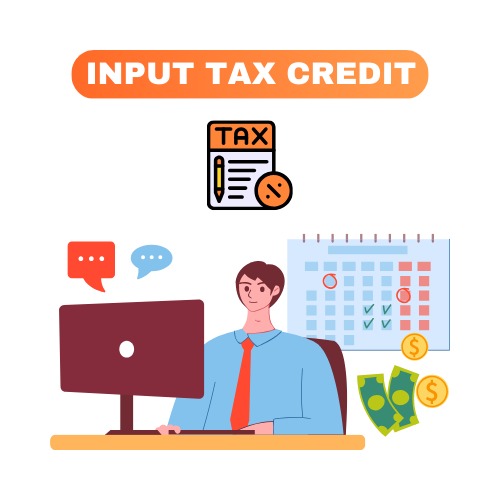new clients - Students/seniors $35 - Corp tax filing starts $800 - install app
Claiming ITCs (Input Tax Credits) – What You Need
Learn how to claim Input Tax Credits (ITCs) in Canada. Find out what expenses qualify, what documents you need, and how to make sure you get every dollar you’re entitled to — with help from TiKi Tax.
10/19/20252 min read


1. What Are Input Tax Credits (ITCs)?
If your business is registered for GST/HST, you’re allowed to recover the GST or HST you pay on business-related purchases. These recoverable amounts are called Input Tax Credits (ITCs).
In simple terms:
👉 You charge GST/HST to your customers and collect it for the CRA.
👉 You also pay GST/HST on your business expenses.
👉 You can claim ITCs to get back the GST/HST you’ve paid — reducing how much you owe to the government.
💡 Example:
If you collected $5,000 GST from your clients but paid $1,200 GST on your expenses, you only owe the CRA $3,800.
2. Who Can Claim ITCs?
You can claim ITCs if:
✅ You are registered for GST/HST with the CRA.
✅ The expenses are used to earn business income (not personal).
✅ You have valid receipts or invoices showing GST/HST paid.
✅ You claim them within four years from the filing period.
3. What Expenses Qualify for ITCs
Not all expenses qualify — but most business-related costs that include GST/HST do.
Here are some common examples small businesses can claim:
Office supplies: pens, paper, computers, printers
Software and subscriptions: QuickBooks, Zoom, Microsoft 365
Rent or utilities: if you have a registered office
Professional services: accounting, legal, consulting fees
Advertising and marketing: social media ads, business cards, website hosting
Vehicle expenses: gas, maintenance, insurance (business portion only)
Home office expenses: internet, phone, heating, and electricity (portion used for business)
💡 Tip: You can’t claim ITCs for personal purchases — only the business-related portion.
4. What You Need to Claim ITCs
Before filing, make sure you have all the right documentation. CRA requires proper proof before approving your ITCs.
Here’s what you’ll need:
Original receipts or invoices showing supplier’s name, date, and GST/HST number
Proof of payment (bank statements, credit card records)
Expense tracking records showing business purpose
Mileage log (if claiming vehicle expenses)
Contracts or agreements (for professional services or subcontractors)
💡 Pro Tip: Keep your digital receipts organized by category (e.g., “Office,” “Advertising,” “Vehicle”). It makes your CRA audit stress-free.
5. How to Calculate and Claim ITCs
When filing your GST/HST return, you’ll calculate:
GST/HST collected – GST/HST paid (ITCs) = Amount owed or refund due.
Here’s a simple breakdown:
DescriptionAmountGST/HST collected from clients$4,000GST/HST paid on expenses (ITCs)$1,200Amount owed to CRA$2,800
You can file your GST/HST return online through CRA My Business Account or let your accountant handle it.
6. Common Mistakes When Claiming ITCs
Avoid these common errors that can lead to CRA issues:
❌ Claiming ITCs for personal expenses
❌ Missing supplier GST/HST registration number on receipts
❌ Claiming without proper proof of payment
❌ Forgetting to claim within the 4-year limit
❌ Not adjusting for mixed-use expenses (e.g., personal and business use)
💡 Tip: If you’re unsure whether an expense qualifies, TiKi Tax can review your records and ensure everything meets CRA rules.
7. Why Work With TiKi Tax
At TiKi Tax, we specialize in helping small businesses, contractors, and self-employed Canadians:
✅ Identify all eligible ITCs you can claim
✅ Organize and verify your receipts
✅ File your GST/HST return accurately
✅ Maximize refunds and reduce CRA risks
With TiKi Tax, you don’t just file taxes — you file smart.
8. Final Takeaway
Claiming Input Tax Credits (ITCs) is one of the best ways to reduce your tax bill as a small business in Canada.
Keep good records, stay organized, and claim only what’s eligible.
If you’re unsure where to start, TiKi Tax can guide you every step of the way — from bookkeeping to CRA filing.
Services
Personalized tax preparation and consulting for all.
Location:
Support
email: info@tikitax.com
Phone:(+1).236.788.7799
© 2024. All rights reserved.
2339 HW 97, Kelowna, BC, Canada
145 Chadwick Ct Suite 220, North Vancouver, BC V7M 3K1
